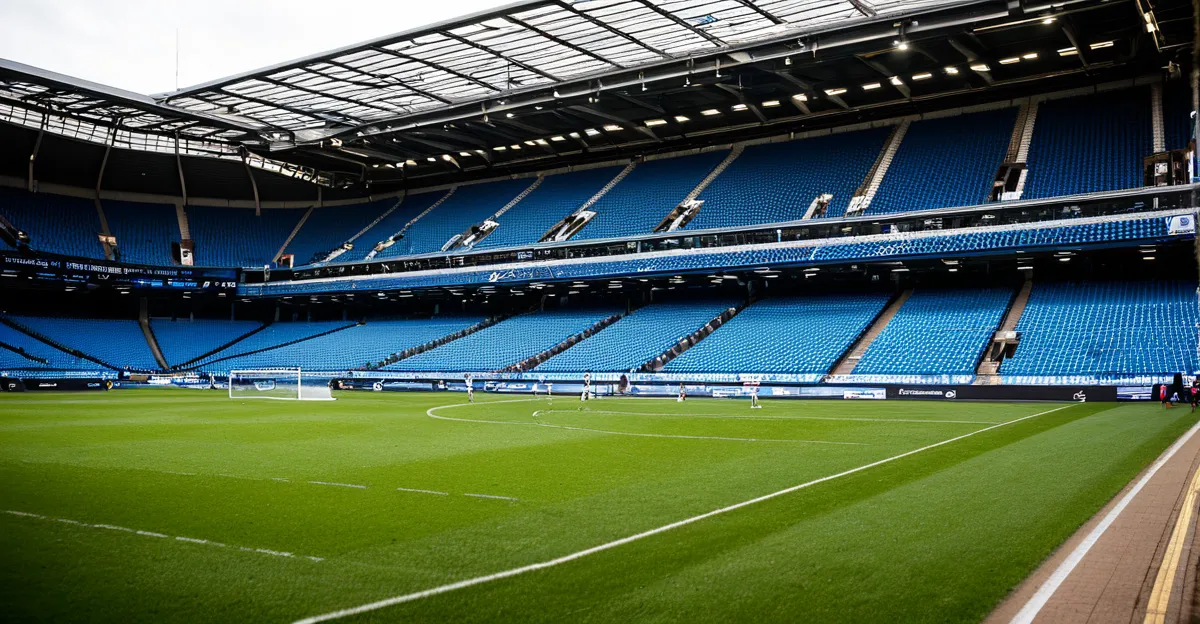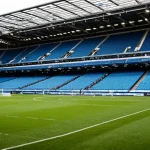Key strategies enhancing accessibility in UK sports facilities
Improving UK sports accessibility involves targeted physical upgrades that cater to diverse needs. Facilities are increasingly incorporating ramps and step-free access to ensure smooth movement for all, especially those with mobility impairments. Equally crucial are accessible toilets, which meet standards for spaciousness and supportive fixtures, familiarizing visitors with a comfortable environment.
Clear signage and wayfinding systems play a pivotal role in guiding users through complex venues. These are designed to accommodate different cognitive and sensory needs, employing large fonts, braille, and contrasting colours. Such improvements reduce confusion and promote independence for disabled visitors.
Also to discover : How Can British Sports Evolve to Dominate on the Global Stage?
Some leading UK sports facilities are pioneering the inclusion of sensory rooms and quiet spaces. These environments help individuals with sensory processing challenges or autism spectrum conditions to engage more fully by offering calming atmospheres away from crowded areas. By integrating these approaches, sports venues demonstrate a holistic commitment to accessibility that extends beyond physical alterations, fostering inclusive experiences for all participants.
Legal and regulatory frameworks shaping accessibility
Understanding the laws that drive inclusive sports environments
Additional reading : How is data analytics transforming coaching strategies in UK sports?
The Equality Act 2010 is central to ensuring disabled access improvements in UK sports venues. This legislation mandates reasonable adjustments, requiring sports facilities to remove physical and systemic barriers that hinder participation. Under this act, failure to comply may result in legal consequences, emphasizing the need for legal compliance in developing inclusive facilities.
Accessibility requirements extend beyond the Equality Act. National guidelines like the Disability Discrimination Act predecessor and local building codes influence the design and upgrading process. These standards specify dimensions for ramps, signage contrast ratios, and accessible toilet provisions, contributing to consistent sports venue upgrades nationwide.
Enforcement involves regular audits and inspections. Authorities evaluate whether venues meet statutory requirements, using complaints and scheduled reviews to monitor progress. This accountability mechanism ensures ongoing commitment to UK sports accessibility and encourages proactive investment in disabled access improvements. Thus, legal frameworks not only set the rules but also foster a culture of inclusion that benefits all sports participants.
Inclusive technology and adaptive equipment adoption
Technological advances are transforming UK sports accessibility by introducing adaptive sports equipment that caters to diverse physical abilities. Facilities investing in specialised wheelchairs, prosthetics-compatible gear, and tactile sports apparatus enable broader participation. This targeted equipment empowers athletes with varying needs, promoting inclusivity in competitive and recreational contexts.
In addition, accessible digital platforms streamline sports venue interaction. User-friendly accessible booking systems ensure that signing up for activities or reserving spaces is straightforward for individuals with disabilities. Features like voice commands, simplified navigation, and compatibility with screen readers enhance independence and ease of use.
Recent innovations in assistive technology also complement physical upgrades, offering real-time support such as audio descriptions or wearable devices that monitor health and provide feedback. This integration of technology into inclusive facilities aligns with wider efforts to eliminate barriers.
By prioritising these tech-driven solutions alongside ongoing disabled access improvements, sports venues not only comply with accessibility requirements but also lead in delivering seamless, engaging experiences for all participants. Innovative adoption thus serves both functional needs and fosters a culture of equity in the sports community.
Showcasing successful accessibility initiatives and case studies
Exploring real-world examples of inclusive progress in UK sports
Numerous UK accessible sports case studies highlight impactful disabled access improvements. For instance, several leading venues have unveiled innovative sensory rooms and quiet spaces designed to ease over-stimulation and enhance comfort. These inclusion initiatives not only support athletes with sensory sensitivities but also signal how sports venue upgrades can address diverse needs beyond traditional physical changes.
Staff training programs form another pillar of successful accessibility. Facilities investing in disability awareness and communication skills foster respectful, knowledgeable environments where all participants feel valued. Feedback from users consistently praises these efforts, noting how trained staff improve overall experience and encourage ongoing participation.
Highlighted venues also often showcase adaptive classes tailored to varying abilities. These initiatives demonstrate commitment to inclusion by offering flexible options that promote physical activity without exclusion.
Together, these case studies provide instructive models for wider adoption of accessible practices. By sharing successes and challenges, the sports sector gains valuable insights into advancing UK sports accessibility comprehensively and effectively.
Ongoing challenges and future developments for UK sports accessibility
Despite progress, significant accessibility barriers remain in UK sports venues. Funding constraints frequently limit the scope of disabled access improvements, especially for smaller community facilities striving to meet comprehensive standards. Additionally, awareness gaps persist among some facility managers regarding the full range of accessibility requirements, hindering timely upgrades.
Infrastructure limitations also pose ongoing challenges. Older buildings often require complex modifications to incorporate ramps, step-free access, or adaptable equipment without compromising heritage value. This creates a tension between preservation and modernisation that many venues must navigate carefully.
Looking ahead, future plans emphasise strategic investments in technology and training to complement physical upgrades. Experts recommend prioritising inclusive design from initial planning stages to avoid costly retrofits. There is also a push for wider consultation with disabled sports users to target interventions effectively.
Long-term goals include standardising accessibility features across all UK sports facilities and increasing funding streams dedicated to ongoing improvements. Official guidance encourages collaboration between government bodies, venue operators, and advocacy groups, fostering a shared commitment to advancing UK sports accessibility sustainably and equitably.





